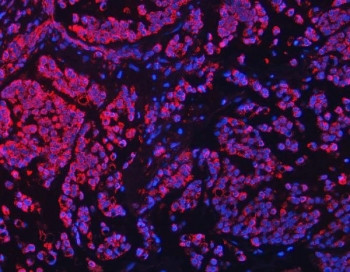Cookie-Einstellungen
Diese Website benutzt Cookies, die für den technischen Betrieb der Website erforderlich sind und stets gesetzt werden. Andere Cookies, die den Komfort bei Benutzung dieser Website erhöhen, der Direktwerbung dienen oder die Interaktion mit anderen Websites und sozialen Netzwerken vereinfachen sollen, werden nur mit Ihrer Zustimmung gesetzt.
Konfiguration
Technisch erforderlich
Diese Cookies sind für die Grundfunktionen des Shops notwendig.
"Alle Cookies ablehnen" Cookie
"Alle Cookies annehmen" Cookie
Ausgewählter Shop
CSRF-Token
Cookie-Einstellungen
FACT-Finder Tracking
Individuelle Preise
Kundenspezifisches Caching
Session
Währungswechsel
Komfortfunktionen
Diese Cookies werden genutzt um das Einkaufserlebnis noch ansprechender zu gestalten, beispielsweise für die Wiedererkennung des Besuchers.
Facebook-Seite in der rechten Blog - Sidebar anzeigen
Merkzettel
Statistik & Tracking
Endgeräteerkennung
Kauf- und Surfverhalten mit Google Tag Manager
Partnerprogramm
| Artikelnummer | Größe | Datenblatt | Manual | SDB | Lieferzeit | Menge | Preis |
|---|---|---|---|---|---|---|---|
| NSJ-RQ7257 | 100 µg | - | - |
3 - 10 Werktage* |
755,00 €
|
Bei Fragen nutzen Sie gerne unser Kontaktformular.
Bestellen Sie auch per E-Mail: info@biomol.com
Größere Menge gewünscht? Bulk-Anfrage
Bestellen Sie auch per E-Mail: info@biomol.com
Größere Menge gewünscht? Bulk-Anfrage
0.5mg/ml if reconstituted with 0.2ml sterile DI water. Transcription factor EB is a protein that... mehr
Produktinformationen "Anti-TFEB"
0.5mg/ml if reconstituted with 0.2ml sterile DI water. Transcription factor EB is a protein that in humans is encoded by the TFEB gene. TFEB is a master gene for lysosomal biogenesis. It encodes a transcription factor that coordinates expression of lysosomal hydrolases, membrane proteins and genes involved in autophagy. Upon nutrient depletion and under aberrant lysosomal storage conditions such as in lysosomal storage diseases, TFEB translocates from the cytoplasm to the nucleus, resulting in the activation of its target genes. TFEB overexpression in cultured cells induces lysosomal biogenesis, exocytosis and autophagy. Viral-mediated TFEB overexpression in cellular and mouse models of lysosomal storage disorders and in common neurodegenerative diseases such as Huntington, Parkinson and Alzheimer diseases, resulted in intracellular clearance of accumulating molecules and rescue of disease phenotypes. TFEB is activated by PGC1-alpha and promotes reduction of htt aggregation and neurotoxicity in a mouse model of Huntington disease. TFEB overexpression has been found in patients with renal cell carcinoma and pancreatic cancer and was shown to promote tumorogenesis via induction of varius oncogenic signals. Protein function: Transcription factor that acts as a master regulator of lysosomal biogenesis, autophagy, lysosomal exocytosis, lipid catabolism, energy metabolism and immune response (PubMed:21617040, PubMed:22576015, PubMed:22343943, PubMed:22692423, PubMed:25720963, PubMed:30120233, PubMed:31672913, PubMed:32612235, PubMed:32753672, PubMed:35662396, PubMed:36697823, PubMed:36749723, PubMed:37079666). Specifically recognizes and binds E-box sequences (5'-CANNTG-3'), efficient DNA-binding requires dimerization with itself or with another MiT/TFE family member such as TFE3 or MITF (PubMed:1748288, PubMed:19556463, PubMed:29146937). Involved in the cellular response to amino acid availability by acting downstream of MTOR: in the presence of nutrients, TFEB phosphorylation by MTOR promotes its cytosolic retention and subsequent inactivation (PubMed:21617040, PubMed:22576015, PubMed:22343943, PubMed:22692423, PubMed:25720963, PubMed:32612235, PubMed:32753672, PubMed:35662396, PubMed:36697823). Upon starvation or lysosomal stress, inhibition of MTOR induces TFEB dephosphorylation, resulting in nuclear localization and transcription factor activity (PubMed:22576015, PubMed:22343943, PubMed:22692423, PubMed:25720963, PubMed:32612235, PubMed:32753672, PubMed:35662396, PubMed:36697823). Specifically recognizes and binds the CLEAR-box sequence (5'-GTCACGTGAC-3') present in the regulatory region of many lysosomal genes, leading to activate their expression, thereby playing a central role in expression of lysosomal genes (PubMed:19556463, PubMed:22692423). Regulates lysosomal positioning in response to nutrient deprivation by promoting the expression of PIP4P1 (PubMed:29146937). Acts as a positive regulator of autophagy by promoting expression of genes involved in autophagy (PubMed:21617040, PubMed:22576015, PubMed:23434374, PubMed:27278822). In association with TFE3, activates the expression of CD40L in T-cells, thereby playing a role in T-cell-dependent antibody responses in activated CD4(+) T-cells and thymus-dependent humoral immunity. Specifically recognizes the gamma-E3 box, a subset of E-boxes, present in the heavy- chain immunoglobulin enhancer (PubMed:2115126). Plays a role in the signal transduction processes required for normal vascularization of the placenta. Involved in the immune response to infection by the bacteria S.aureus, S.typhimurium or S.enterica: infection promotes itaconate production, leading to alkylation, resulting in nuclear localization and transcription factor activity (PubMed:35662396). Itaconate-mediated alkylation activates TFEB- dependent lysosomal biogenesis, facilitating the bacteria clearance during the antibacterial innate immune response (PubMed:35662396). In association with ACSS2, promotes the expression of genes involved in lysosome biogenesis and both autophagy upon glucose deprivation (PubMed:28552616). [The UniProt Consortium]
| Schlagworte: | Anti-BHLHE35, Anti-bHLHe35, Anti-Transcription factor EB, Anti-Class E basic helix-loop-helix protein 35, TFEB Antibody |
| Hersteller: | NSJ Bioreagents |
| Hersteller-Nr: | RQ7257 |
Eigenschaften
| Anwendung: | WB, IHC (paraffin), FC, IF, Direct ELISA |
| Antikörper-Typ: | Polyclonal |
| Konjugat: | No |
| Wirt: | Rabbit |
| Spezies-Reaktivität: | human, mouse, rat |
| Immunogen: | Recombinant human protein (amino acids A214-H326) |
| Format: | Purified |
Datenbank Information
| KEGG ID : | K15590 | Passende Produkte |
| UniProt ID : | P19484 | Passende Produkte |
| Gene ID | GeneID 7942 | Passende Produkte |
Handhabung & Sicherheit
| Lagerung: | +4°C |
| Versand: | +4°C (International: +4°C) |
Achtung
Nur für Forschungszwecke und Laboruntersuchungen: Nicht für die Anwendung im oder am Menschen!
Nur für Forschungszwecke und Laboruntersuchungen: Nicht für die Anwendung im oder am Menschen!
Hier folgen Informationen zur Produktreferenz.
mehr
Hier kriegen Sie ein Zertifikat
Loggen Sie sich ein oder registrieren Sie sich, um Analysenzertifikate anzufordern.
Bewertungen lesen, schreiben und diskutieren... mehr
Kundenbewertungen für "Anti-TFEB"
Bewertung schreiben
Loggen Sie sich ein oder registrieren Sie sich, um eine Produktbewertung abzugeben.
Zuletzt angesehen




























